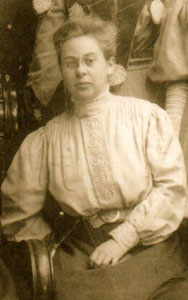
Richmond is the capital city of the Commonwealth of Virginia in the United States. Incorporated in 1742, Richmond has been an independent city since 1871. The city's population in the 2020 census was 226,610, up from 204,214 in 2010, making it Virginia's fourth-most populous city. The Richmond metropolitan area, with 1,260,029 people, is the Commonwealth's third-most populous.

Hollywood Cemetery is a large, sprawling cemetery located next to Richmond, Virginia's, Oregon Hill neighborhood at 412 South Cherry Street. Characterized by rolling hills and winding paths overlooking the James River, it is the resting place of two United States Presidents, James Monroe and John Tyler, as well as the only Confederate States President, Jefferson Davis. It is also the resting place of 28 Confederate generals, more than any other cemetery in the country; these include George Pickett and J.E.B. Stuart.

The Tredegar Iron Works in Richmond, Virginia, was the biggest ironworks in the Confederacy during the American Civil War, and a significant factor in the decision to make Richmond its capital.

Collegiate Gothic is an architectural style subgenre of Gothic Revival architecture, popular in the late-19th and early-20th centuries for college and high school buildings in the United States and Canada, and to a certain extent Europe. A form of historicist architecture, it took its inspiration from English Tudor and Gothic buildings. It has returned in the 21st century in the form of prominent new buildings at schools and universities including Cornell, Princeton, Washington University, and Yale.

The James River and Kanawha Canal was a partially built canal in Virginia intended to facilitate shipments of passengers and freight by water between the western counties of Virginia and the coast. Ultimately its towpath became the roadbed for a rail line following the same course.

Mediterranean Revival is an architectural style introduced in the United States, Canada, and certain other countries in the 19th century. It incorporated references from Spanish Renaissance, Spanish Colonial, Italian Renaissance, French Colonial, Beaux-Arts, Moorish architecture, and Venetian Gothic architecture.

Alexander Jackson Davis was an American architect known particularly for his association with the Gothic Revival style.

The Northside is an area composed of northern Richmond, Virginia and some parts of Henrico County, Virginia.

The James Monroe Tomb is the burial place of U.S. President James Monroe in Hollywood Cemetery, Richmond, Virginia, United States. The principal feature of the tomb is an architecturally unusual cast iron cage, designed by Albert Lybrock and installed in 1859 after Monroe's body was moved from Marble Cemetery in New York City. The tomb was declared a National Historic Landmark in 1971 for its unique architecture. To Richmonders it is colloquially known as The Birdcage.

Old City Hall, known formerly as City Hall, is the former city hall of Richmond, Virginia that was designed by Elijah E. Myers. It served as City Hall from its completion in 1894 through the 1970s. The building occupies its own city block in downtown Richmond, bounded by 10th and 11th Streets to the west and east, and Capitol Street and East Broad Street to the south. The building is executed in a meticulous Gothic Revival style, and was designated a National Historic Landmark for its architecture.

St. Christopher's School is an American private college preparatory school for boys located in Richmond, Virginia. The school is listed on the National Register of Historic Places.

The Medical College of Virginia/Virginia Commonwealth University School of Medicine is the medical school of Virginia Commonwealth University, a public research university in Richmond, Virginia. It is the largest and oldest continuously operating medical school in Virginia. The school traces its beginnings to the 1838 opening of the medical department of Hampden–Sydney College, which in 1854 became an independent institution known as the Medical College of Virginia (MCV). In 1968, MCV joined with the Richmond Professional Institute to form Virginia Commonwealth University. The School of Medicine is one of five schools within the VCU Medical Center and Children's Hospital of Richmond at VCU.

The Chestnut Hill–Plateau Historic District is a historic area in the Highland Park neighborhood of Richmond, Virginia. It is also known as 'Highland Park Southern Tip' on city neighborhood maps.

Gambles Hill is a neighborhood near Downtown Richmond, Virginia. The neighborhood contains the Virginia War Monument, Historic Tredegar, Brown's Island and the WestRock Corporation.

The Scott's Addition Historic District is a national historic district located in Richmond, Virginia.

Grace Evelyn Arents was an heiress, Christian activist and philanthropist in Richmond, Virginia. She inherited $20 million from her uncle Lewis Ginter, a tobacco business magnate and philanthropist, and she used the money to transform Richmond for the better.
The 1907 North Carolina Tar Heels football team represented the University of North Carolina and indepdepent during the 1907 college football season. Led by Otis Lamson in his first and only season as head coach, North Carolina compiled a record of 4–4–1. The team's captain was Joseph S. Mann.
The 1913 North Carolina Tar Heels football team represented the University of North Carolina in the 1913 college football season. The team captain of the 1913 season was L. L. Albernethy.
Frederick T. "'Rick" Gray Jr. is an American politician, writer, actor, and former attorney and educator. Appointed by Governor John N. Dalton as Secretary of the Commonwealth of Virginia in 1978, Gray later resigned in 1981 in solidarity with jailed striking air traffic controllers. Gray spent several decades in Virginia teaching, writing, and acting before moving to Cannon Beach, Oregon in 2018. He is currently running for the Oregon House of Representatives in the 32nd district.

















